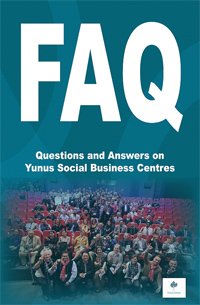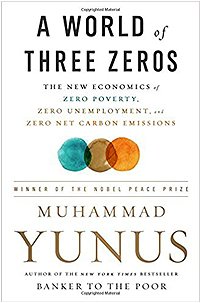Sub-par but not subprime
The EconomistIssue Relevant
Lending to the poor has held up well but it is not as safe from the credit crisis as its champions hoped.
A global credit crisis caused by subprime mortgages is hardly the ideal backdrop for a business making unsecured loans to poor people without a credit history. Yet big microfinance companies, which do exactly that, seem to be in rude health. Mohammad Yunus, the unflappably optimistic founder of Grameen Bank in Bangladesh, a microfinance institution for which he won the Nobel Peace Prize in 2006, is adamant that business remains unscathed.
“We have not been touched in any way by the financial crisis,†he said on a recent visit to Japan. “The simple reason is because we are rooted to the real economy—we are not paper-based, paper-chasing banking. When we give a loan of $100, behind the $100 there are chickens, there are cows. It is not something imaginary.â€
He is not alone in thinking that microfinance is insulated from the problems of the global economy. Its proponents argue that any similarity with subprime loans is misleading. Microfinance institutions (MFIs) lend relatively small sums of money to people in developing countries to start small, profitable businesses, not to buy overpriced homes. Many of those businesses serve local needs, which has more merit at a time when exports are collapsing. And microfinance’s reliance on peer pressure for repayment must be the envy of any mainstream banker struggling with rising foreclosures and “jingle mailâ€; delinquency rates are microscopic.
Some MFIs, however, do not enjoy the same isolation that their borrowers do. Many of them are funded internationally. According to the Consultative Group to Assist the Poor (CGAP), a research centre in Washington, DC, foreign-capital flows into microfinance tripled between 2004 and 2006. About half the industry’s funding comes from aid budgets, but the share of private money is growing. The World Bank’s private arm, the International Finance Corporation (IFC) gave 55% more each year to microfinance lenders between 2004 and 2007. MFIs, especially those in eastern Europe and Central Asia, also borrowed from foreign banks. Meanwhile the microfinance portfolios of private investment funds grew from $600m in 2004 to $2 billion in 2006.
Funding from development institutions like the IFC is likely to be stable, but aid budgets are being cut and other sources of funding are threatened, too. Kimanthi Mutua, who runs K-Rep Bank, a big Kenyan microlender, says that in 2007 he fielded calls from prospective investors every couple of weeks. For the past six months he has not had a single call. According to CGAP’s Elizabeth Littlefield, borrowing costs have risen by up to four and a half percentage points in some markets. Foreign-currency borrowers may have exchange-rate fluctuations to cope with. And some global banks are pulling out altogether. Even MFIs that borrow locally may find their banks’ funding is constrained by global conditions.
An even more pressing concern is refinancing existing debt. Most MFIs have loans with one- or two-year tenures. According to the IFC, there is a potential refinancing gap of $1.8 billion over the next 18 months. The IFC and the German government have put together a $500m fund to help microfinance firms with refinancing.
All this, some experts argue, should encourage the institutions to start raising funds by collecting deposits rather than relying on fickle markets or donors. In Africa many MFIs already do this. The slow slog of attracting depositors can be off-putting, however, and may become harder if the crisis deepens. The World Bank estimates that worsening economic conditions could push an additional 65m people under the $2-a-day poverty line. These people—formerly known as the “nearly poorâ€â€”were just the sort whose savings deposit-taking MFIs had hoped to target.
The squeeze on credit could expose additional frailties in the microfinance model. Many observers suspect that at least some microfinance loans actually finance consumption, not investment, and that borrowers use new loans from one MFI to pay off their debts with another. As long as new credit is readily available, this strategy works—much as paying off one credit card with another once did in the rich world. But the credit crunch may expose this as a problem, reckons Justin Oliver, who runs the Centre for Microfinance, a research centre in Chennai, India. Meanwhile, the IFC reports that data from the top 150 microfinance institutions show that the share of borrowers 30 days delinquent on their loans has increased from 1.2% before the crisis to between 2% and 3% now. This is still very low by most standards and Mr Yunus says that repayment rates at Grameen remain impeccable. But the worry is that a prolonged credit crunch could make microfinance clients start to look more like those hapless subprime borrowers.


